The first few days of school are crucial for developing the classroom routines and procedures that will guide the class for the rest of the school year. This is especially true for your math instruction.
The very first day or two of school, I focus on general classroom routines and procedures and move into content specific procedural lessons a couple days into the year. To be perfectly honest, these procedures can be boring. I obviously don’t want my students bored, so I’ve found a few ways to make teaching procedures a little more engaging!
There are simply too many procedures to teach all at one time. Students respond better when procedures are taught in small chunks of time, rather than trying to teach every procedure in one lesson. The easiest way to do this is to teach a brief lesson on a math workshop procedure BEFORE beginning that day’s math lesson. You should be able to teach the most essential procedures in about 10 days.
The lessons below are all included in my First Days of Math Workshop resource. In each lesson, there are teacher notes and student instructions. You can absolutely modify the lessons to fit with your style of math instruction.
What is Math Workshop?
Every year it’s so tempting to skip this lesson. It seems a little too obvious. However, that’s not necessarily the case for our students, and it helps to have common terminology and expectations. Students who are learning math procedures distantly must also learn how each part of math workshop will be shared or presented.
After the lesson, have students complete a brief review. The activity can be completed in two different ways. One is to allow students to explain the three parts of math workshop in their own words with Google Slides. This version will allow students to practice accessing Google Classroom and practice opening and working with resources through Google Slides. Students will be able to resize and insert text boxes.The other format can be completed on paper.
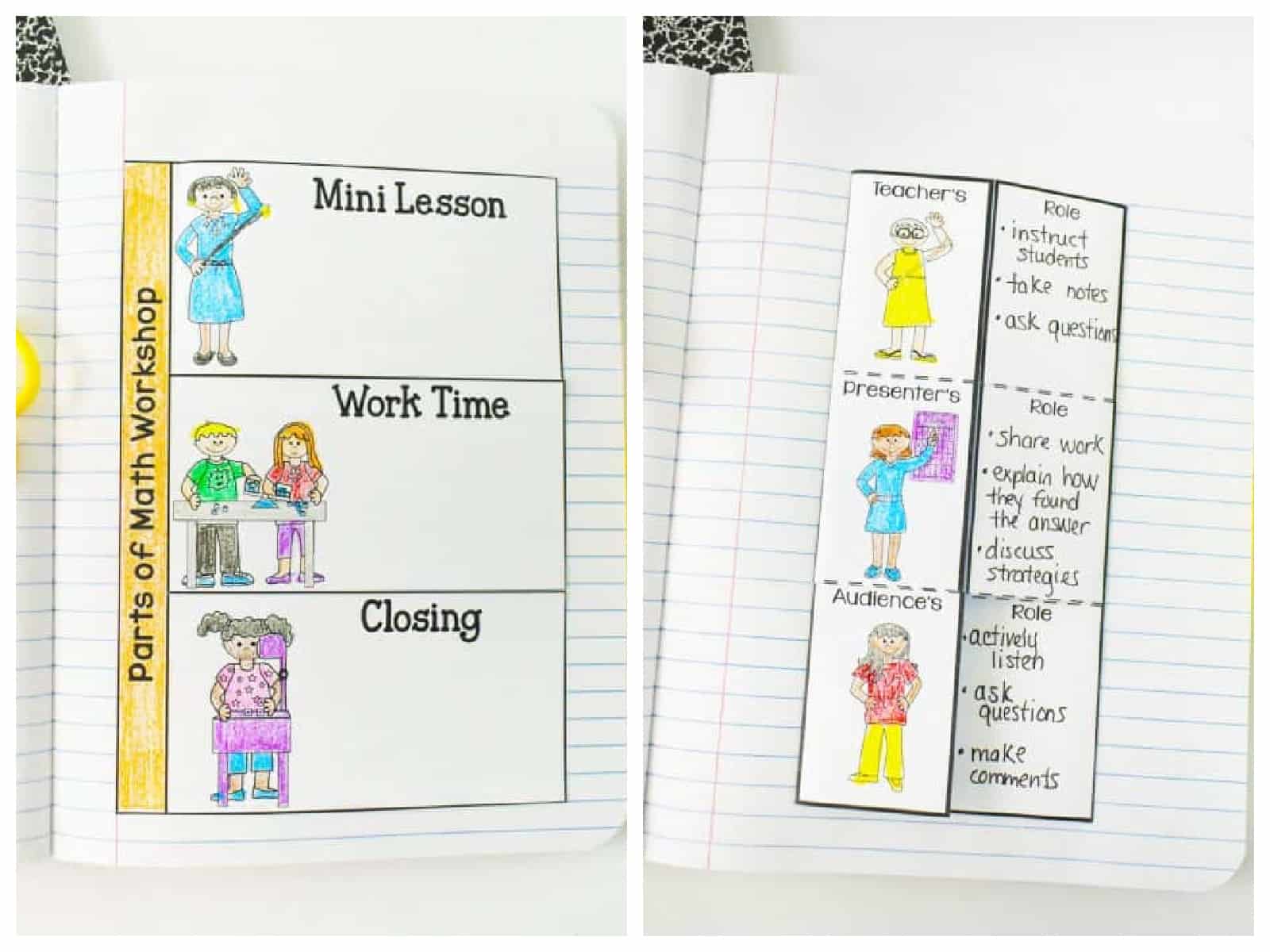
Habits of Good Math Students
The next classroom routines and procedures lesson teaches students about behavior and academic expectations during math workshop. Have students generate a list of good habits of math students. As you add to the list, guide students into including the following:
- Show your work-We want students to get right answers, but we also want them to understand the HOW and WHY of math.
- Remain on task-Discuss what students who are on task look like and what students who are not on task look like.
- Ask productive questions-We want our students to ask questions during math. However, we need to teach students how and when to ask their questions. Students must also learn how to articulate a question. I always use this lesson to share that, ”I don’t get it” isn’t a question.
- Actively participate in class-Spend time discussing how to participate and what engagement means and looks like, as well as what it doesn’t look like.
- Take their time-Explain that hurrying through your work to be the first person finished does not equal a good math student.
As a follow-up activity to this lesson, have students complete the graphic organizer below. If you plan to incorporate a signifiant amount of technology during this time, show students HOW to click a link to watch a video and return to the original assignment.
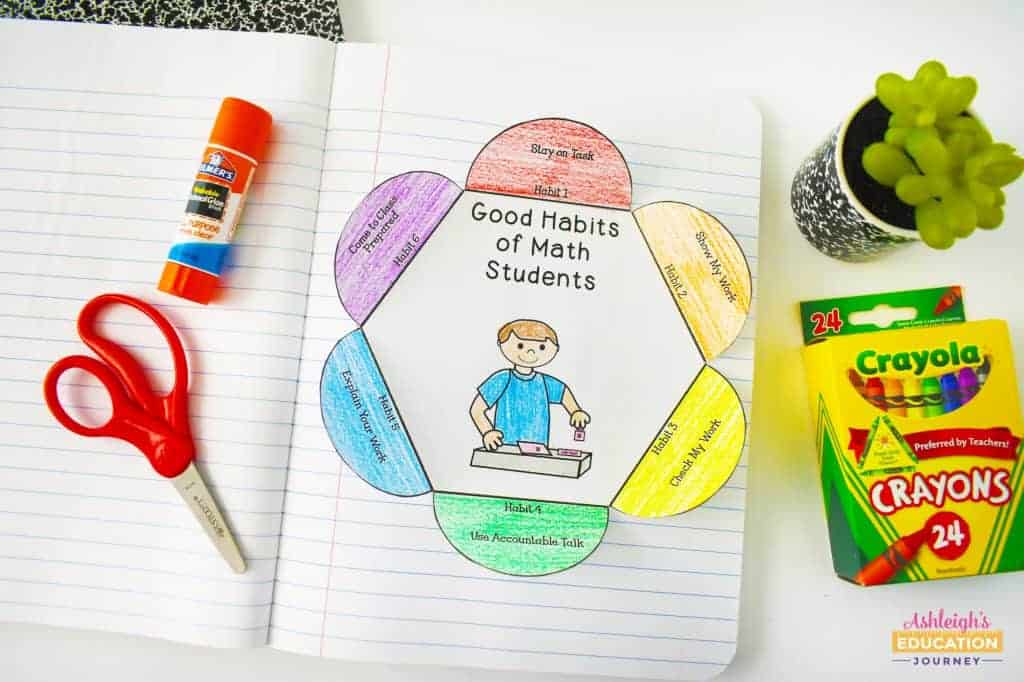
What Happens During Work Time?
This math classroom routines and procedures lesson revisits “What is Math Workshop?” It goes more in depth on what should happen during work time. If you plan on using centers, this lesson is when you will explain your center math procedures.
During the lesson, describe your expectations for work time.
- Raise your hand if you need the teacher, or what students should do if they need help.
- Talk in a soft voice-discuss volume levels.
- Stay on task-you can never review this too much.
- Show all your work-you will need to revisit this regularly.
- When to avoid leaving the classroom-I ask my students to wait until AFTER the mini lesson (excluding emergencies).
- Never interrupt a small group-what are other options.
- Where students may and may not sit while competing their work
If you are implementing centers, share how centers will be structured.
- How many activities a day should students complete?
- How many days a week will students participate in centers?
- What do students do with completed center work?
- How do students know which task to complete?
- How will students check their work?
What Happens During Closing?
It is easy to overlook closing during math workshop when teaching classroom routines and procedures. However, it is an essential piece to the model for learning math procedures. At the beginning of the year it takes a great deal of modeling and practice to teach students how to appropriately share.
In this lesson, create an anchor chart that says, “Responsibilities During Closing”.
Presenter
- Shares work
- Explains HOW they found their answer
- Discuss the strategies they used
- Asks and answers questions
- Speaks clearly
- Looks at audience
Audience
- Actively Listens-discuss what that means
- Makes relevant and productive comments-discuss what is relevant and productive and what isn’t
- Asks questions-Discuss what types of questions are appropriate
Closings can be incredibly powerful with digital learning. Three great tools for closing are FlipGrid, Padlet, and Jamboard. It’s certainly not essential to use all three platforms. Sometimes less is more.
Have students complete the closing time expectation graphic organizer. In the assignment, students describe the behavior and procedural expectation for math closing.
Classroom Routines and Procedures – Accountable Talk
Accountable talk is when the students talk and listen to each other using the correct terminology and vocabulary, as well as explain their math thinking and engage in math discussions. This is often very difficult for students, especially at the beginning of the year.
Even though you are not always present with students during distance learning, accountable talk is still important to ensure students are getting a grasp on math procedures. Use this lesson to explain your accountable talk (and writing) for distance learning.
- Use correct vocabulary. Give examples and non examples.
- How to explain answers in math. This is the first of many lessons on this topic. Use this as a starting place but don’t expect immediate success or mastery.
- Discuss how to leave comments to others using accountable talk. Without guidance, students tend to leave comments such as: I like how you wrote neatly; You did a good job; I think that’s right, etc. While not necessarily bad, these comments do not continue the learning process. Model examples of productive comments and questions.
- Discuss what will happen in the event someone leaves an inappropriate comment.
There is a paper version of this activity where students sort what accountable talks sounds like and what active listening looks like.
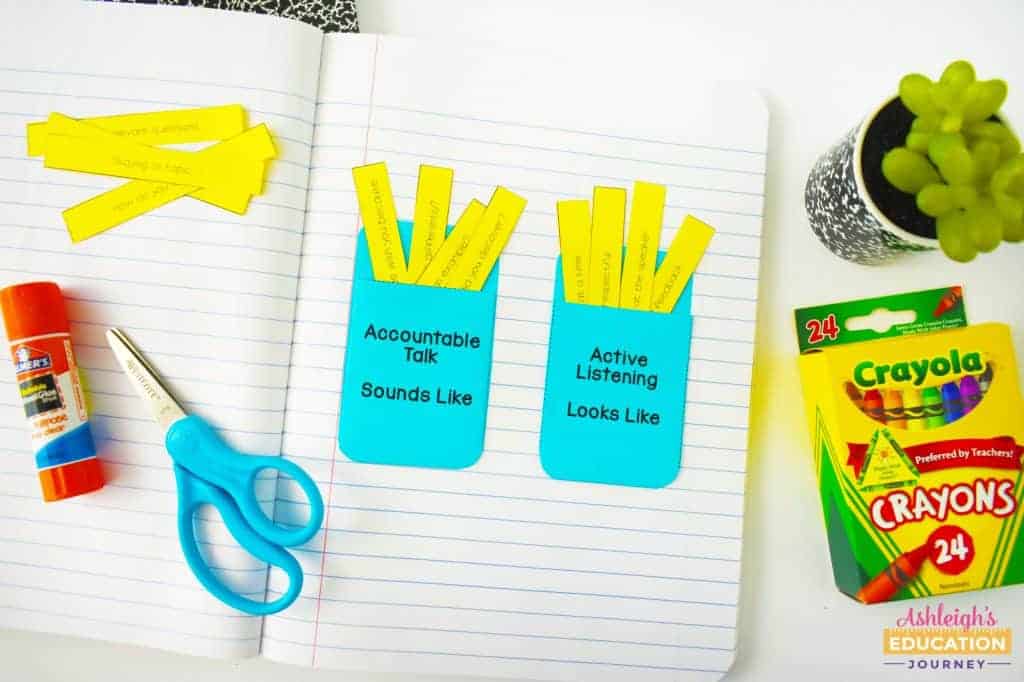
What Do I Do When I Finish My Work?
This classroom routine and procedure will vary greatly from teacher to teacher. The most important thing is to make sure students know exactly what they are supposed to do when they finish their work time task. Some suggestions include:
- Learning/Performance Task-keep until we share-after we share ONE person per table will turn in all papers (this will have to be modified this year)
- Test/Quiz-turn in to tray as soon as you are finished
- Centers-clean up center area and materials but do not turn in recording sheet until ALL center activities are completed
- Booklets-do not turn in until booklet is finished
Be sure to teach students how to submit assignments through Google Classroom. During this lesson, also show students how you can unsubmit an assignment if corrections need to be made. If you use any type of rubric or grading scale, teach students how to access this information as well.
Have students practice submitting an assignment in Google Classroom. Then, have students unsubmit the assignment to ensure all students can utilize this feature.
Classroom Routines and Procedures – Math Manipulatives
It is essential to be consistent with your expectations of how manipulatives should be used. Have students generate a list of expectations for correctly using manipulatives during.
Make sure students know where the manipulatives are kept in your classroom and your policy on how and when to access manipulatives. Let students know which ones are available to them to use and which may be off limits. Be sure students also know how to put away their manipulatives.
Students can access manipulatives digitally, so they can also use this time to learn how to access digital manipulatives. Show students how to access and use the virtual manipulatives you plan to use first in your instruction. In today’s task, have students show to ways they can use virtual manipulatives. You can read more about using math manipulatives here.
The paper version of this activity is a great way to review the purpose or need of each procedure for manipulatives.
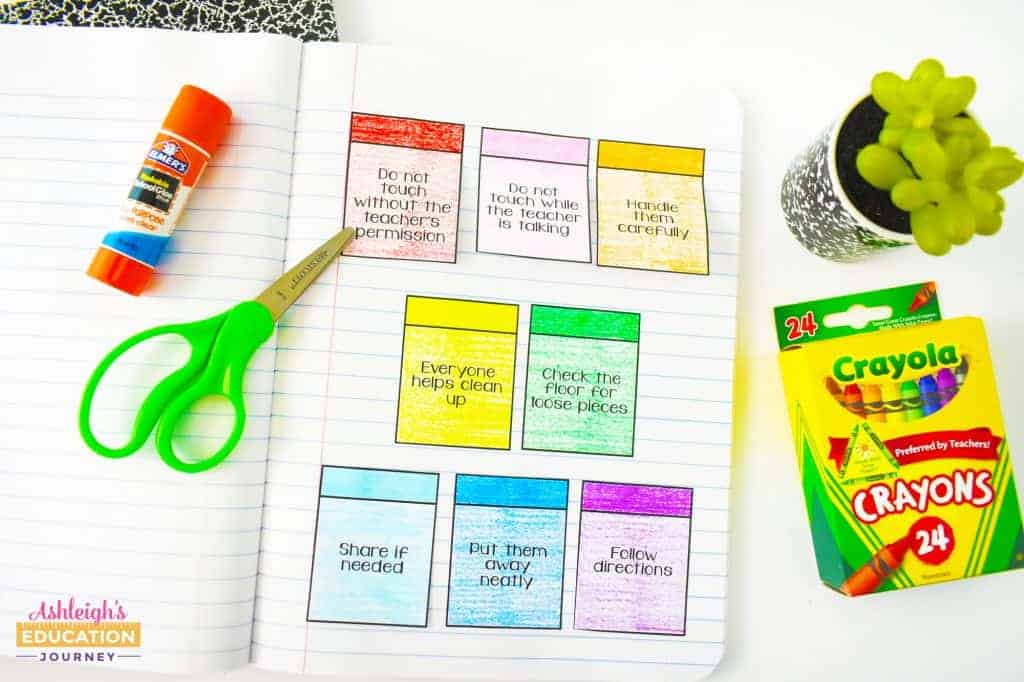
How to Work in a Group
Math instruction is highly interactive where students collaborate and work with their peers. However, working with a group isn’t always easy for some students. It’s important to set your expectations on how students should work with each other.
- Stay on topic
- Use quiet voices
- Listen to each other
- Don’t work ahead
- Help each other-letting classmates copy isn’t helping
- Ask your group members questions
- Be kind and supportive
- It’s okay to disagree-support your reasoning respectfully
What is Struggle Time
Struggle time is usually an unfamiliar concept to students that is often very frustrating. However, struggle time is a very necessary part of teaching math procedures through a workshop. Since many of the tasks are complex and require critical thinking, students should not always look at the assignment and immediately know what to do. They must stop and analyze the question and decide what they must do to solve the problem. This can be very difficult for students, especially those who are used to “getting it” quickly and easily.
Give students ideas of what to do when they get stuck:
- Understand-retell the problem in your own words
- Underline key words
- Think about what the question is really asking
- Try-just give it a try (guess and check)
- Draw a picture
- Take the numbers out
- Work backward
- Make an estimate
- Reflect-does your answer make sense
- Take it one step at a time
In the lesson show students how to access the support resources you plan to use-anchor charts, math notes, Khan Academy, etc. It’s also important to remember that this is the first lesson of many needed lessons on problem solving strategies.

Classroom Routines and Procedures – Multiple Representations
Students should be encouraged or even required to represent their mathematical thinking though multiple representations. The use of multiple representations allows students to further develop their conceptual understanding of math procedures. Of course, not all problems can, or should, be shown with each representation.
Explain to students that good math students represent their work in multiple forms:
- Pictures or other model
- Number sentences
- Written explanation
- Table
- Graph
Students need to represent their thinking through multiple representations.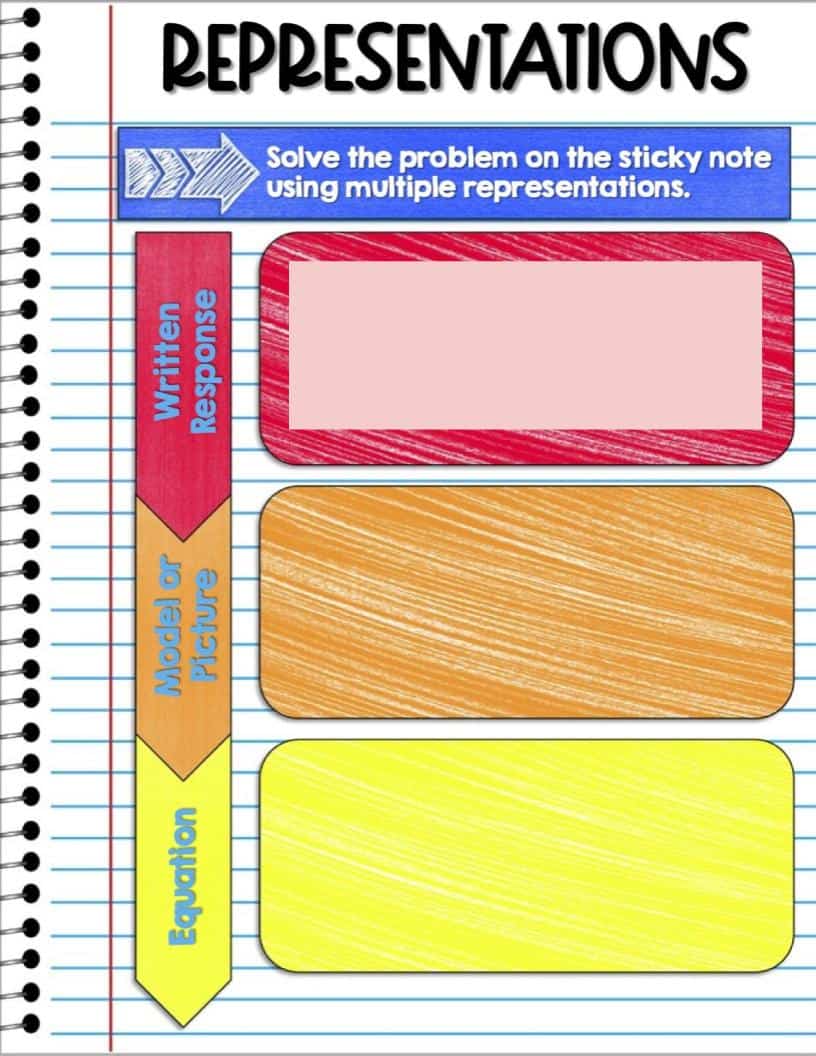
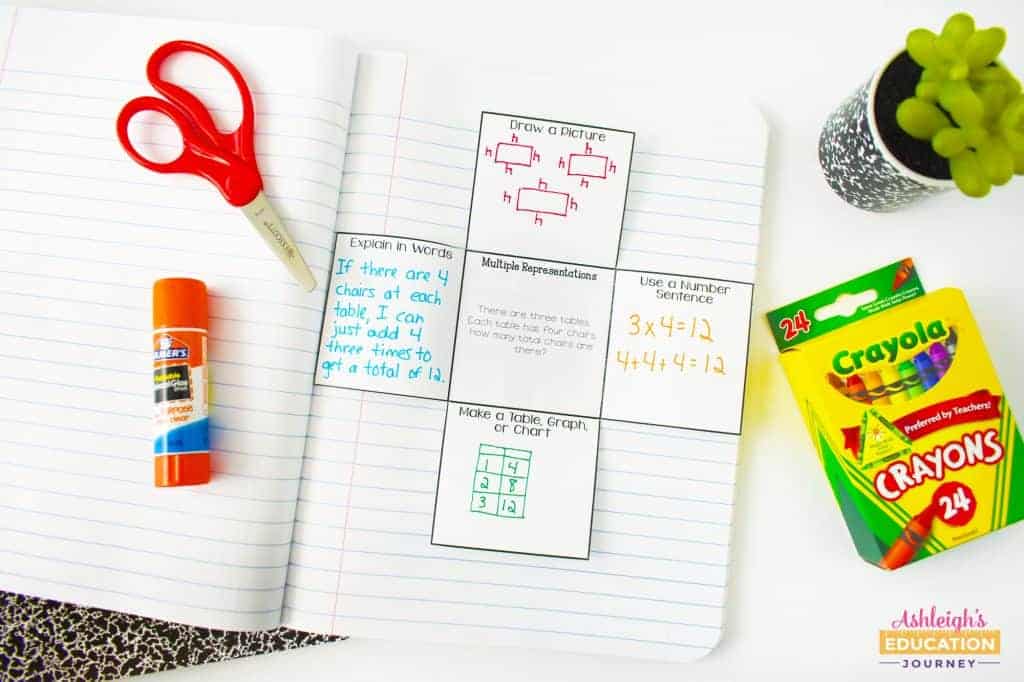
Classroom Routine and Procedures Final Notes
Don’t forget you can modify, move, or even eliminate lessons to make sure the classroom routines and procedures lessons work for your students. You can click here to access all of the activities shown above in my First Days of Math Workshop.
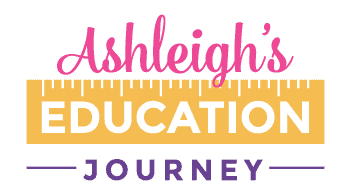
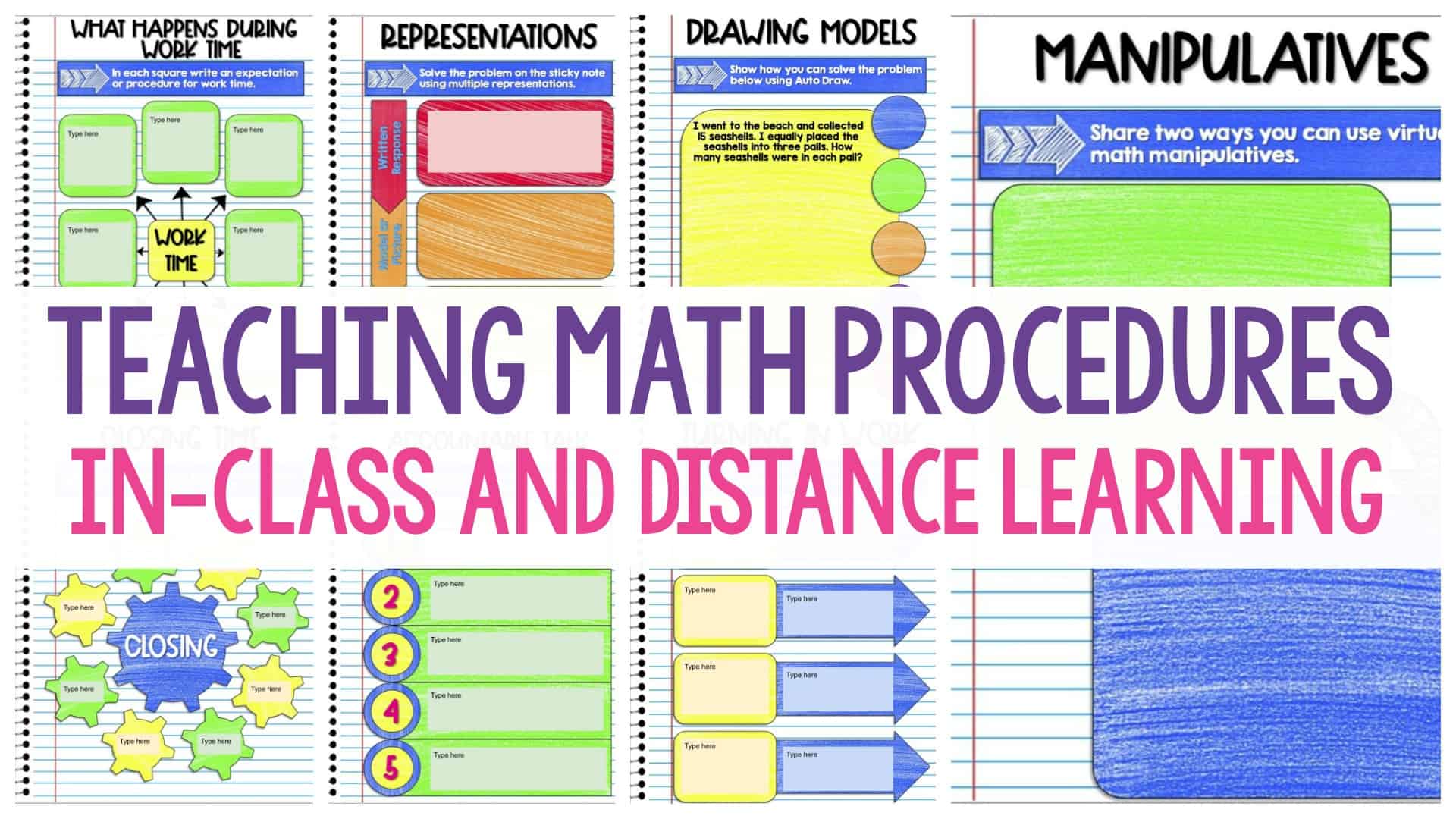

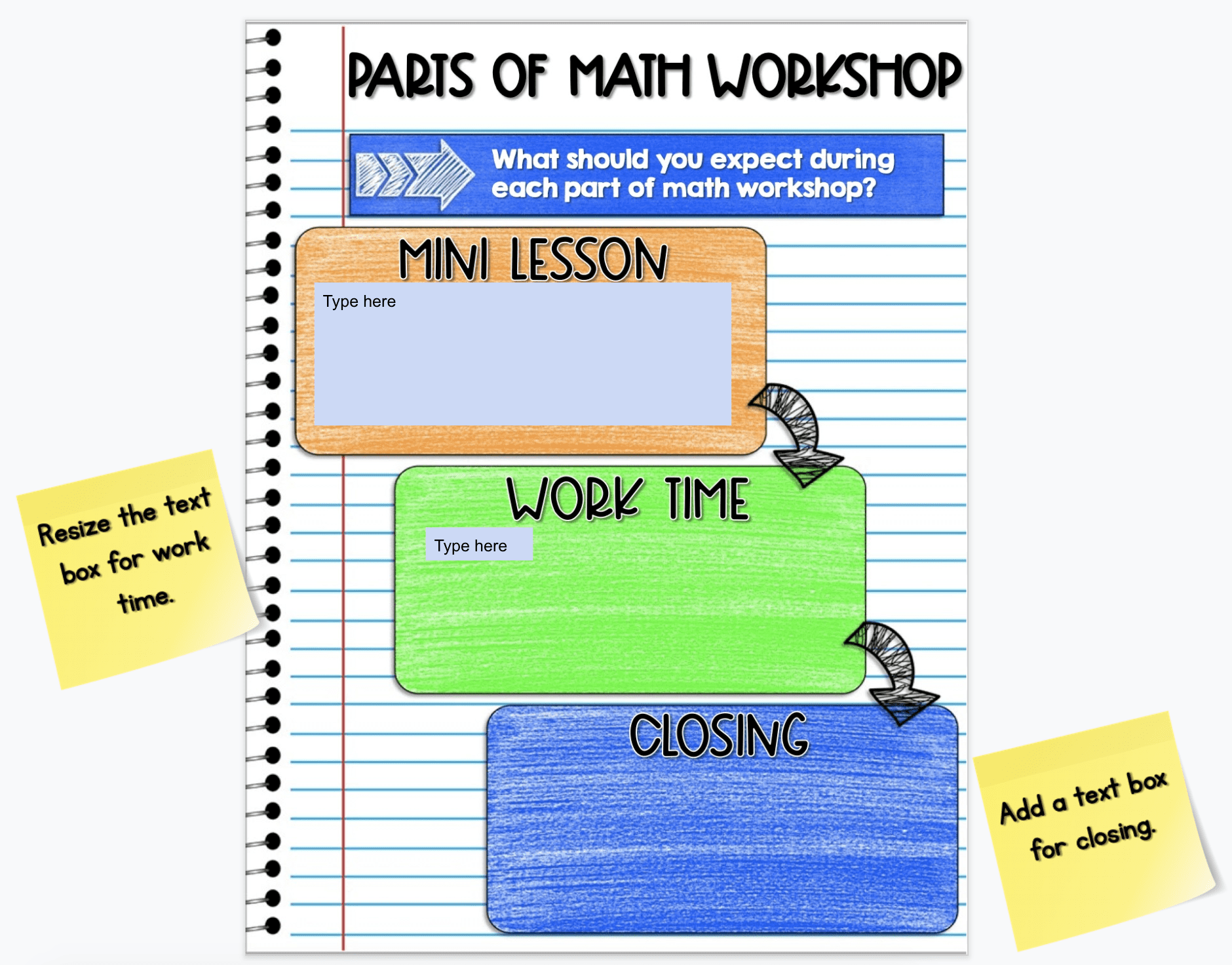
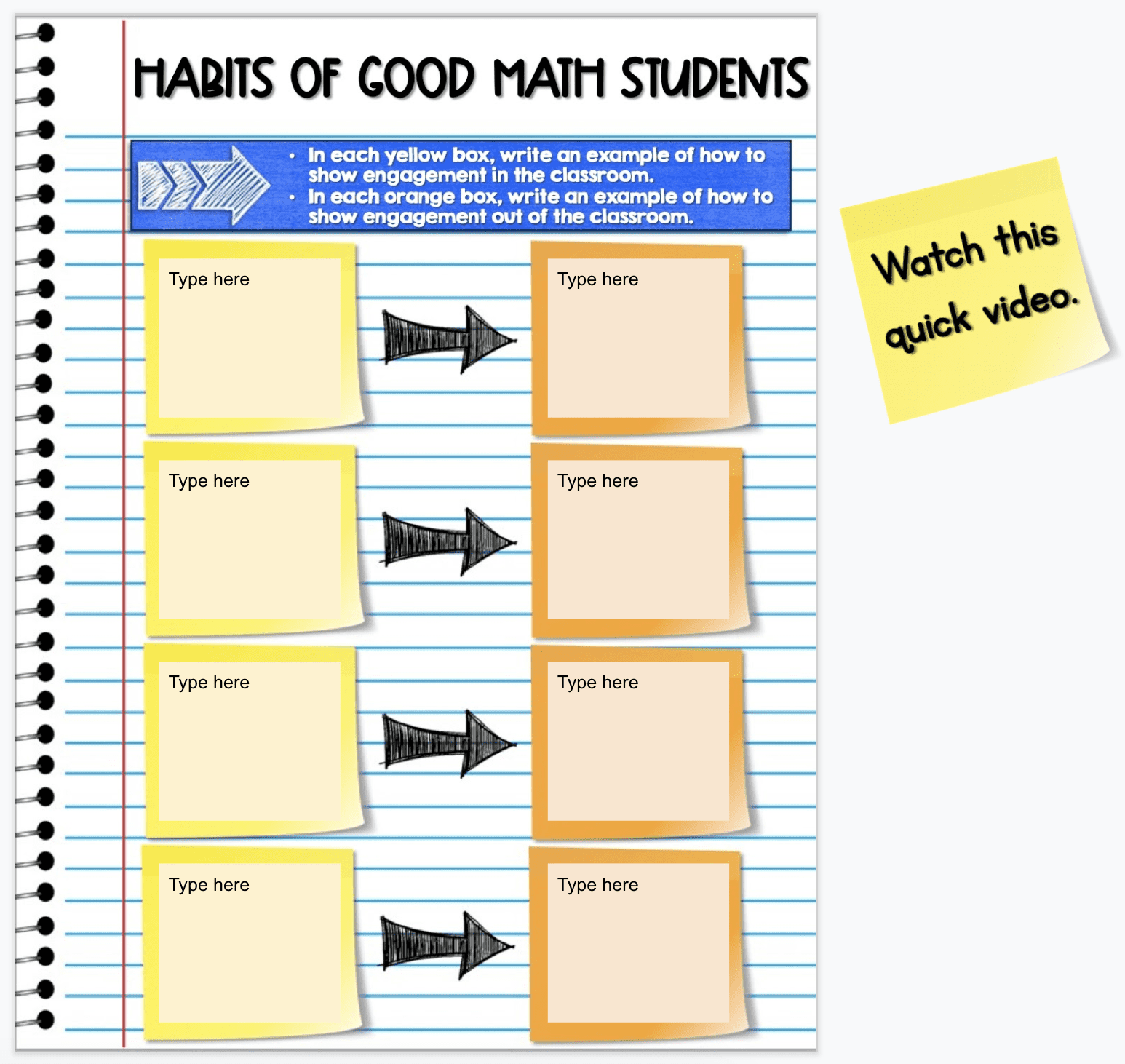
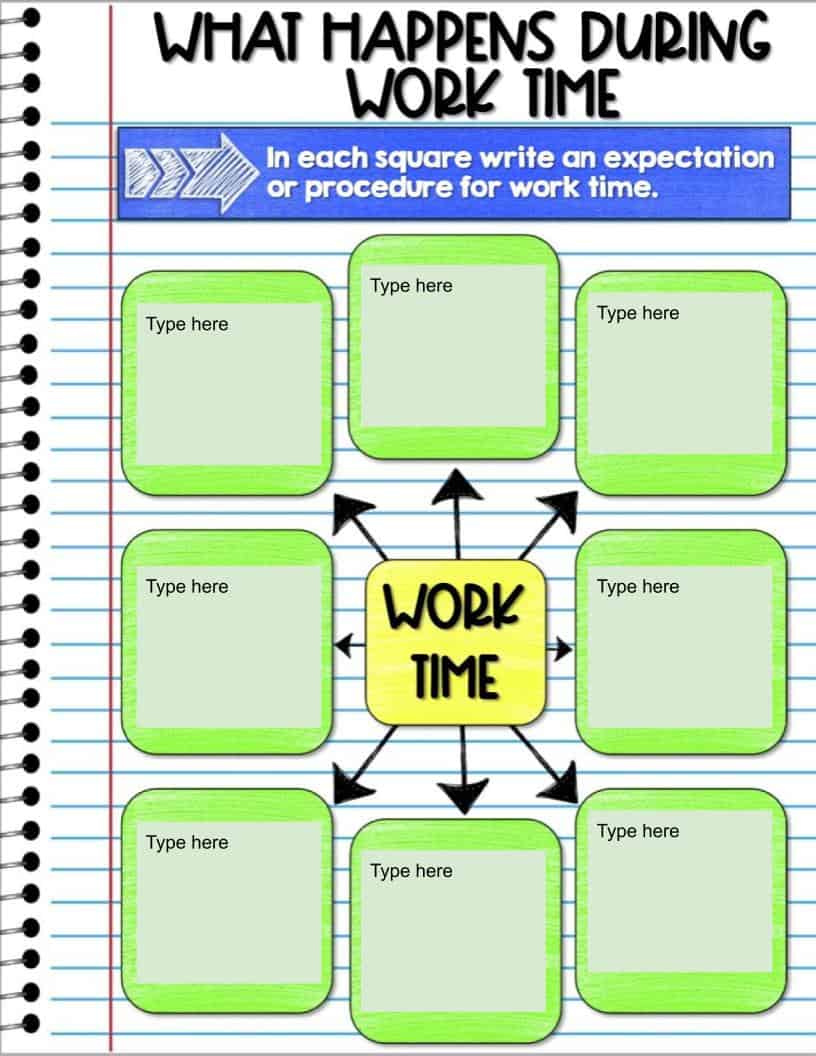
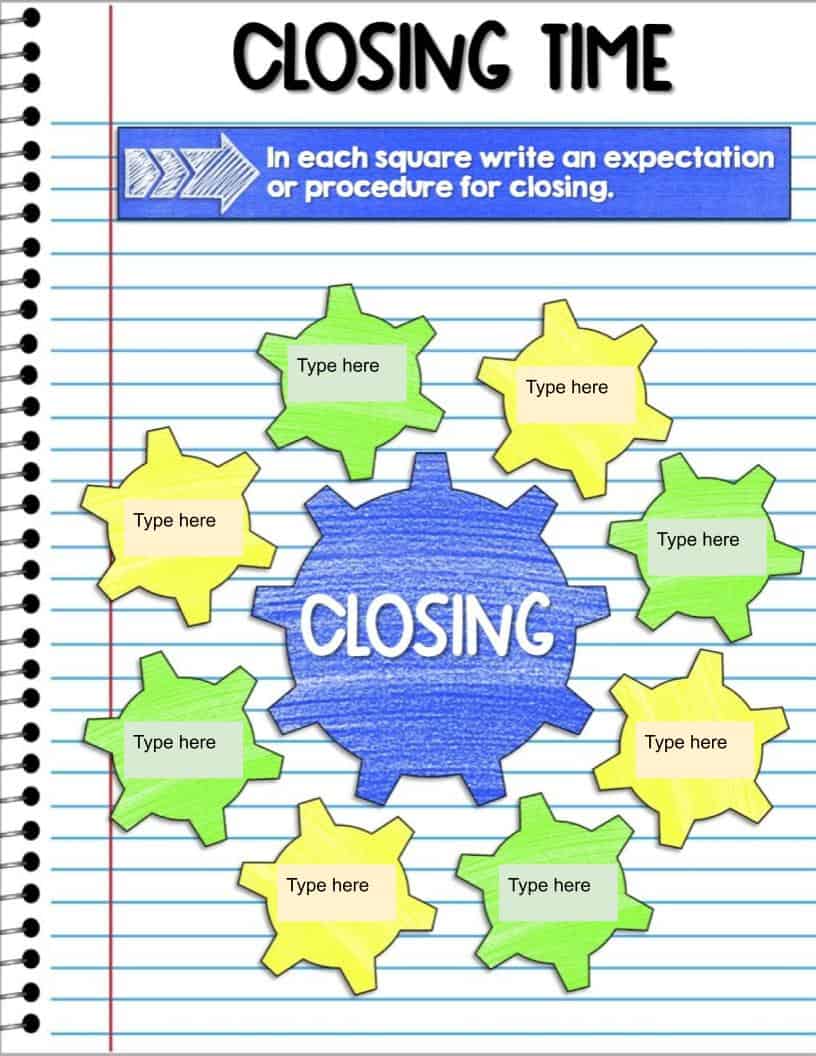
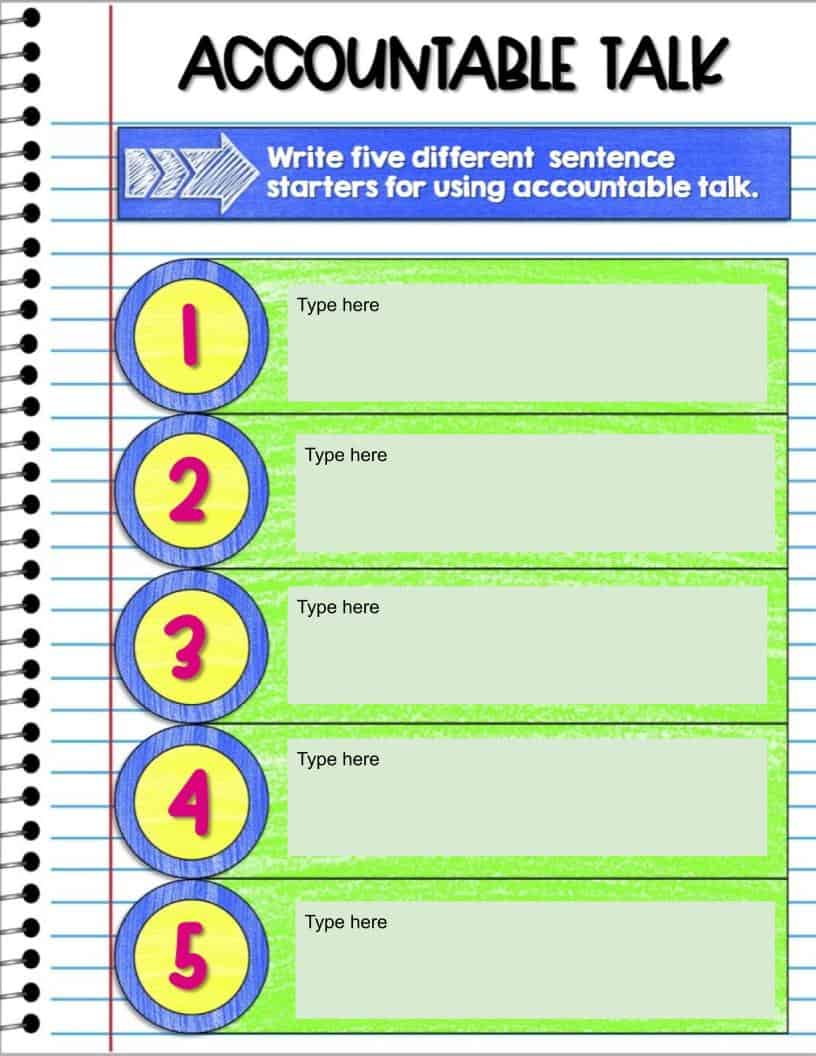
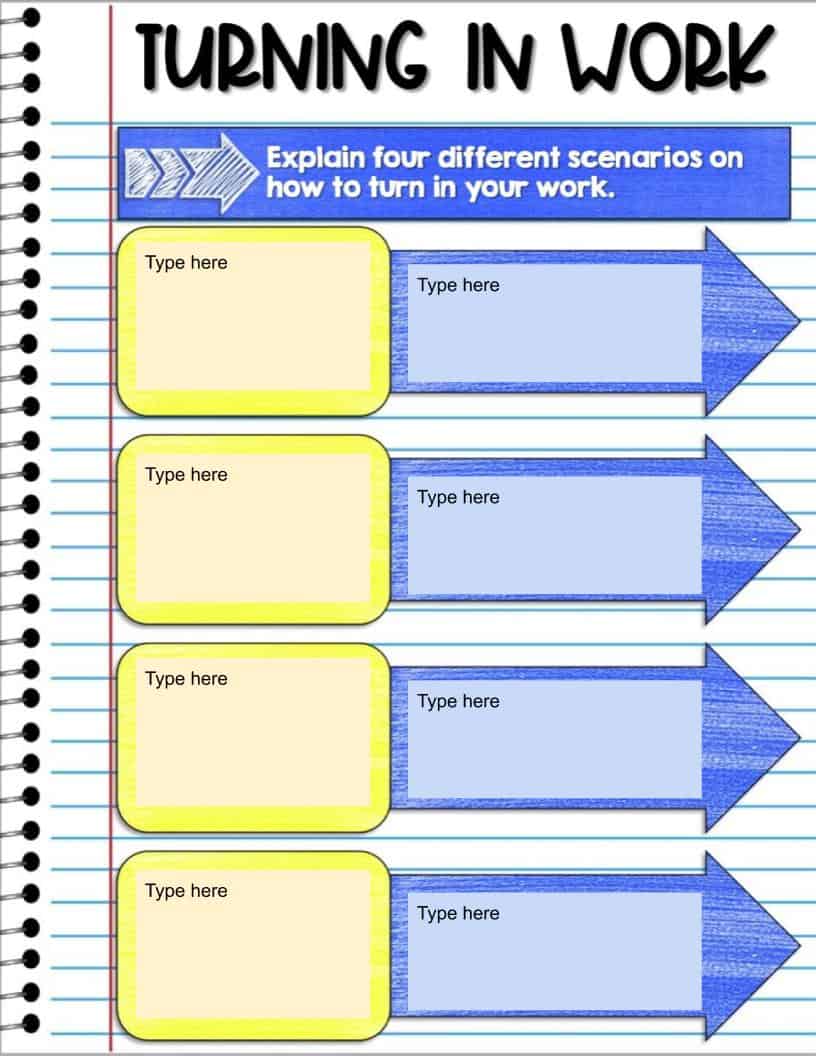
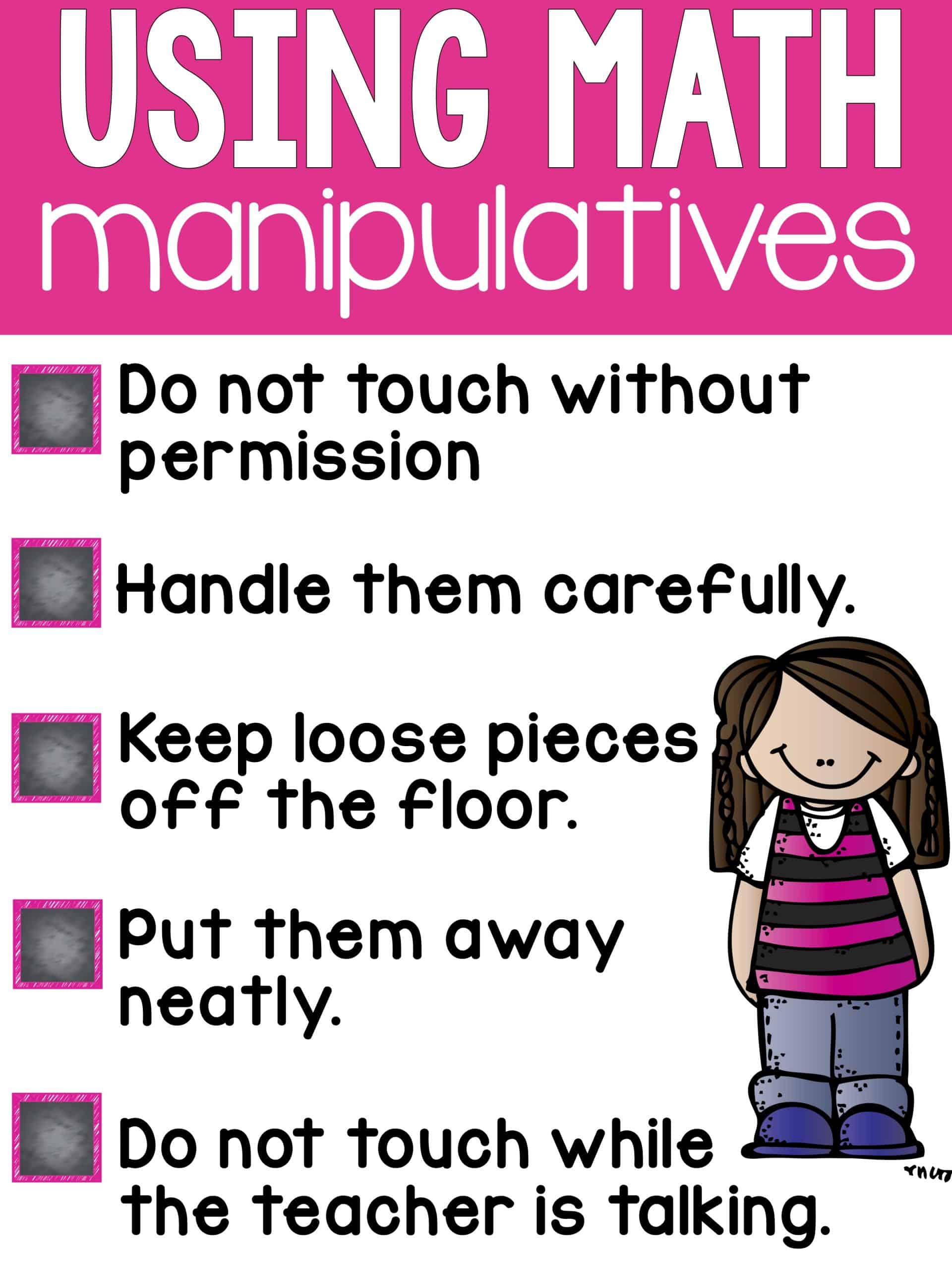
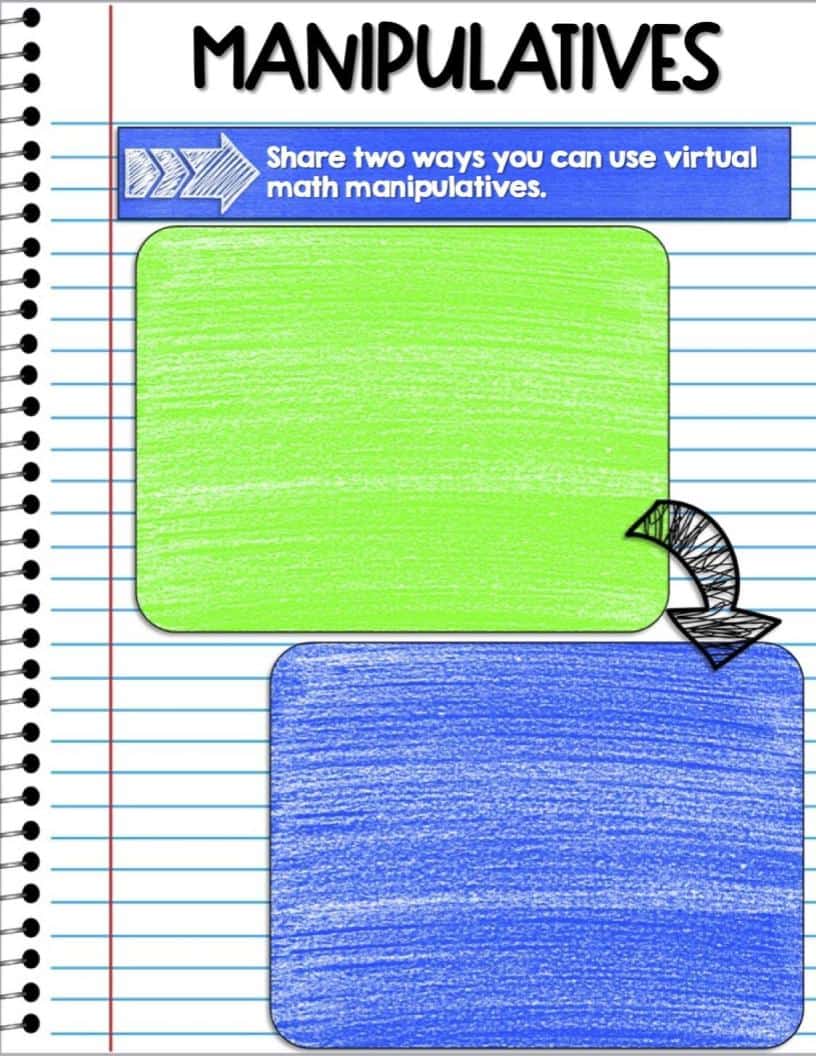
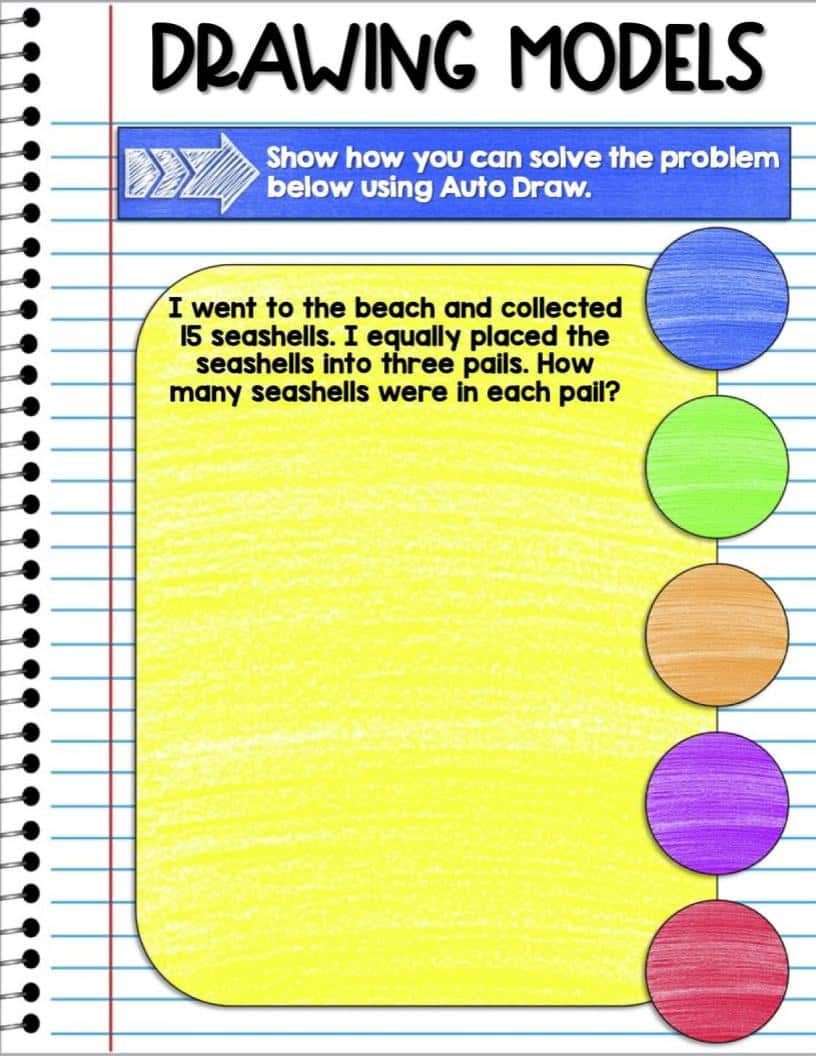
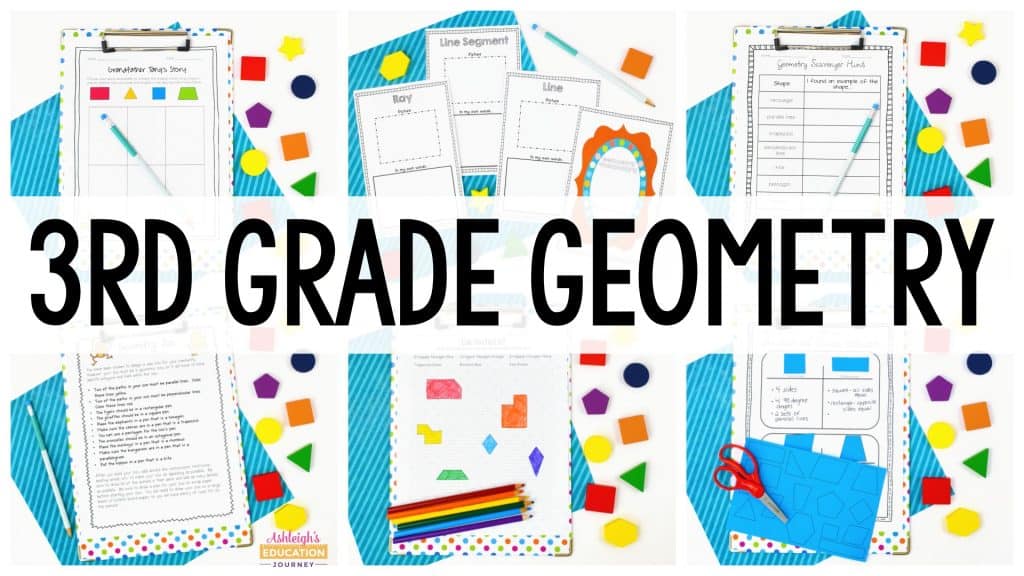
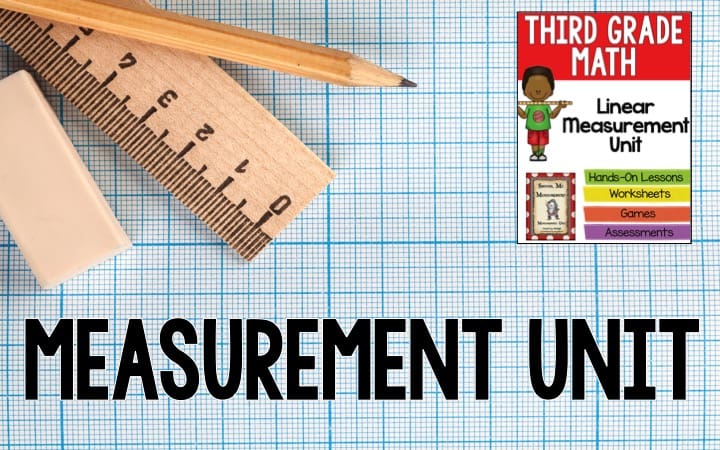
I cant thank you enough for this, I’m changing grades and with distance learning the beginning of this school year was becoming sooo overwhelming. But this information helps me to put everything into perspective.
Pingback: Tips, Tricks, and Tech Tidbits - Part 4 • TechNotes Blog